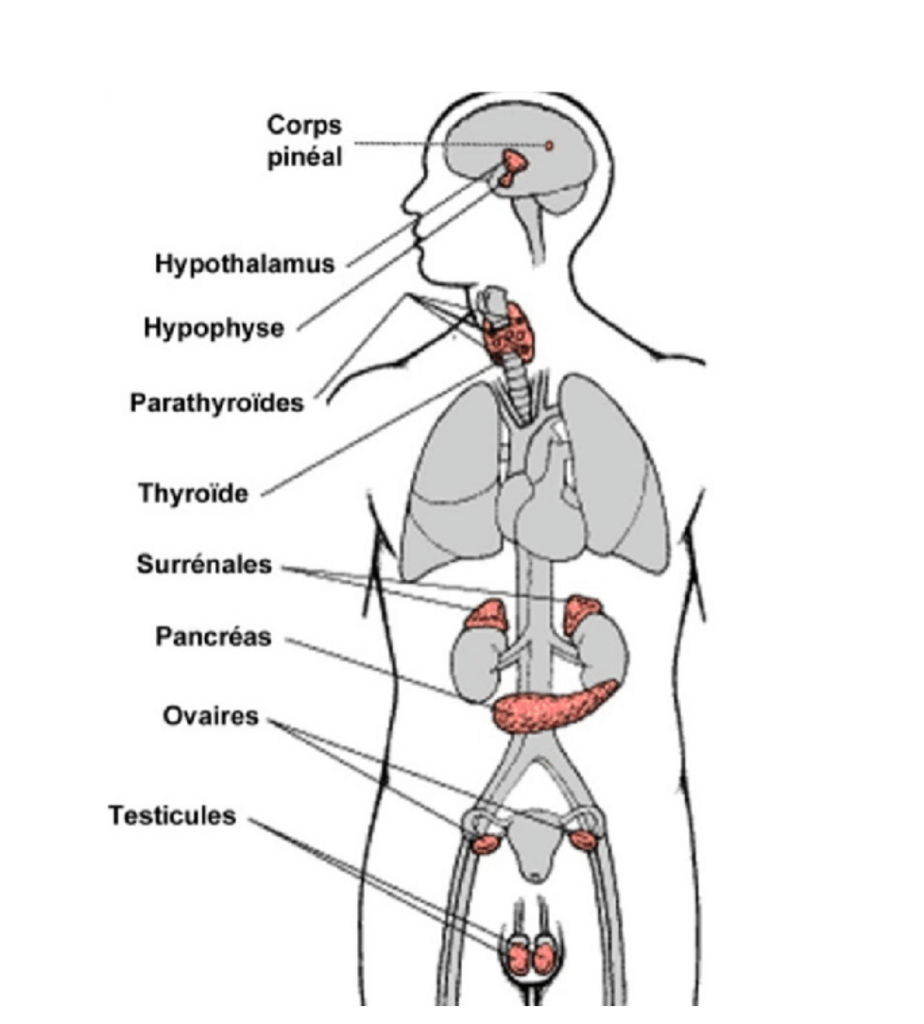When a child’s mood suddenly shifts, when growth spurts seem to happen overnight, or when new questions about identity and wellbeing emerge in your household—what’s orchestrating these transformations? Far beyond mere biology, the sex hormones function as silent conductors, shaping not only the physical transformation from infancy to adulthood, but also playing unexpected roles in immune resilience, emotional stability, and the daily dance of family life. Questions naturally arise: Why does puberty look so different from one child to the next? What does “hormonal balance” even mean, and why does it matter for mental and physical health? And—perhaps most worrying of all—how can you tell when something might be off, and what can you do to support your child’s journey at every stage? By exploring the sex hormones function, parents become more empowered, better equipped, and more confident in navigating the unpredictable yet fascinating journey of growth.
What exactly are sex hormones—and why should parents care?
The master communicators: Behind the science
Imagine chemical messengers journeying through tiny blood vessels, ferrying instructions to every corner of the body. Those are hormones, and the sex hormones function lights up the story of development, identity, and vitality. Originating in the ovaries, testes, and adrenal glands, these molecules contribute far more than “just” reproduction—a fact that often surprises parents. What’s on their résumé? Directing the remarkable processes of brain maturation, bone mineralization, social adaptability, and even regulating mood fluctuations.
Sex versus gender: Exploring different pathways
Parents sometimes find themselves tangled in the terminology: Is it “sex” or “gender”? Sex describes the biological framework—chromosomes, reproductive organs, and hormonal profiles—while gender unfolds as a tapestry woven from personal identity and sociocultural threads. Recognizing these distinctions allows families to nurture self-acceptance and build unwavering emotional security. Children, in their marvelous individuality, benefit from support rooted in both science and empathy.
The main actors: Exploring the trio of sex hormones
Androgens: More than “male” hormones
You might instantly associate testosterone with boys and puberty. Yet, androgen function extends to all children—testosterone, produced in the testes, ovaries, and adrenal glands, serves as a vital architect for both body and brain. What happens under its influence? Expect muscle growth, facial and body hair, voice deepening, but also subtler influences like improved bone density, emotional regulation, and neural circuit sculpting—sometimes with effects so nuanced that they only become clear in retrospect. Dihydrotestosterone (DHT), a potent derivative, acts like a switch for external genital and hair development, responding in real-time to the demands of puberty.
Estrogens: Growth, resilience, and beyond
Estradiol, estrone, estriol, estetrol. The spectrum of estrogens is as broad as their influence—guiding breast and bone development in girls, enriching cognitive pathways in all children, and regulating the menstrual cycle. During childhood, levels remain modest but not absent, quietly supporting coordinated physical and neurological growth. Still wonder why a balanced estrogen environment matters? Beyond the menstrual cycle, estrogens underpin libido, fat distribution, skeletal strength, and even—somewhat surprisingly—immune vigor.
Progestogens: Not just for pregnancy
Progesterone typically stars in the narrative of conception and pregnancy, but its reach stretches, sometimes overlooked, into everyday brain health and resilience for everyone. Produced in the ovaries, adrenal glands, and during pregnancy by placental tissues, progesterone helps shield nervous system cells, supports cognitive calm, and maintains reproductive equilibrium. During each menstrual cycle, its rise signals uterine preparation, breast maturation, and a readiness for the possibility of new life.
How sex hormones function: Production, regulation, and action
The brain–body conversation
Everything begins in the hypothalamus, a brain region that operates as mission control for hormonal release. It issues orders in the form of GnRH (gonadotropin-releasing hormone), triggering the pituitary gland to produce LH (luteinizing hormone) and FSH (follicle-stimulating hormone). These relay messages to the gonads, instigating the sex hormones function cascade—adapting output based on daily needs, stress, or environmental cues. This exquisite feedback loop (the gonadotropic axis) ensures stability despite rapid transitions.
Targeting tissues: Receptors and responses
How do these hormones orchestrate such a range of effects—from musculature to memory? By binding to specific hormone receptors on cell surfaces or within target cells, they activate cellular programs to alter gene expression (genomic effects), tweak neurotransmitter release, or adjust energy utilization within minutes. Their influence is at once powerfully direct and astonishingly adaptable.
Birth, breakdown, and balance
All sex hormones share a common origin—cholesterol. Synthesized mainly in the gonads and adrenal cortex, they circulate until being metabolized by the liver, then eliminated. The rhythm of synthesis, action, and degradation allows fine-tuned adaptation to growth stages, activity, nutrition, and sleep—all ingredients that color the sex hormones function palette.
Sex hormones across the life course: What every parent should understand
Early childhood: Shaping subtle differences
Before the visible changes of puberty, low levels of sex hormones are already at work. They organize brain connectivity, influence learning readiness, and lay the foundation for memory formation. Sometimes the effects remain subtle—differences in play, sensitivity, or behavior patterns. At this stage, questions around identity may gently surface, making supportive dialogue especially valuable.
Puberty: Turning up the dial
Then, almost overnight, comes the surge. Puberty is activated by intensified sex hormones function, marking the transformation to adolescence: breast and hip development in girls, deepening voices and muscle growth in boys, complex emotional variability for all. Individual timing differs widely. Some mature swiftly, while others proceed more slowly—there is no single “normal.” In some families, puzzling questions may linger: Are mood swings typical? What signals a concerning delay or acceleration? Clear communication and reassurance become linchpins.
Fertility, pregnancy, and postpartum
For adolescents transitioning to adulthood, the focus of sex hormones function shifts: Estrogen triggers the thickening of the uterine lining, while progesterone prepares the uterus for potential pregnancy and later readies the breasts for nourishment. In males, testosterone governs sperm development and sexual drive. During pregnancy, a symphony of hormonal adjustments supports both fetal growth and maternal adaptation—then, with birth, dramatic drops cue milk production and emotion shifts. Parents often wonder whether mood swings or fatigue are “normal”; the answer often lies within these sudden hormonal transitions.
Menopause, andropause, and healthy aging
Eventually, all bodies change their hormonal script. Menopause marks a decline in estrogen, shifting the balance away from regular cycles, protecting against bone loss less effectively, and sometimes bringing sleep or mood changes. Andropause for men involves a gradual dip in testosterone, leading to changes in muscle mass, drive, or energy. These transitions invite new conversations: How to support bone density, heart health, or emotional wellbeing?
The wider web: Sex hormones, health, and daily life
Beyond reproduction: Building health from bones to mood
The sex hormones function extends into every tissue. Estrogen fortifies bone mineral density, enhances cardiovascular protection (by improving cholesterol ratios), and sustains elasticity in blood vessels. Testosterone supports muscle maintenance and activates circuits for motivation and vigor. Metabolism, immune balance, even the distribution of fat and muscle, all relate to these hormonal messengers.
Immune system cross-talk
Here’s a fascinating wrinkle: Sex hormones influence immune cell function. Estrogen tends to amplify immune activity, which can mean girls mount stronger responses to infections—but also have higher risks of certain autoimmune issues. Testosterone, with its immunosuppressive lean, can lower inflammation but might reduce viral resistance. Parents sometimes puzzle over why two children react so differently to illness; hormonal influences are a major, if invisible, factor.
Skin, urogenital, and neurological health
Have you noticed acne erupting with puberty, or skin becoming more supple during pregnancy? That’s the sex hormones function at work on collagen production, oil regulation, and wound healing. Similarly, estrogen achieves more than reproductive readiness; it supports the elasticity, hydration, and defense of the vaginal and urinary tissues, while testosterone helps stabilize urinary tract and prostate health for boys.
Keeping hormones balanced: Recommendations for families
Self-regulation, lifestyle, and risk factors
Families sometimes wonder: “Why is my child’s puberty so early (or so late)? Where did all this moodiness come from?” It’s normal for sex hormones function to fluctuate with age, genetic inheritance, sleep, nutrition, emotional stress, and environmental exposures. Events such as rapid weight gain, puberty, pregnancy, or menopause can shift hormonal dynamics—sometimes subtly, sometimes dramatically.
Practical tips for supporting hormonal health:
- Emphasize nutrient-rich foods: healthy fats (olive oil, seeds, nuts), protein, fiber, and a rainbow of fruits and vegetables.
- Encourage regular, age-appropriate movement: active play for little ones, sports or walks for teens and adults.
- Prioritize sleep routines for everyone in the family.
- Manage stress through breathing exercises, creative play, and downtime.
- Limit exposure to chemical disruptors (e.g., certain plastics or pesticides).
Recognizing imbalance: When to seek extra support
Sometimes, observations at home—persistent mood swings, unusual hair growth, severe acne, or irregular periods—may suggest an unbalanced sex hormones function. Underlying causes can range from PCOS (polycystic ovary syndrome) in adolescents, to hypogonadism (low testosterone), or early menopause in women. Some changes are normal; others signal a need for blood tests and medical consultation.
Diagnosis—a combination of blood, saliva, or urine tests—tracks hormone profiles to guide care, which may involve lifestyle changes, medications, or hormone therapy. Compassion and professional partnership remain essential allies for families, helping parents and children face hormones’ unpredictability with resilience and hope.
Interconnectedness: The broad hormonal orchestra
Sex hormones never operate alone. Cortisol (the “stress hormone”) can impact menstrual cycles and testosterone levels; thyroid disorders often masquerade as emotional or physical upsets; even neurotransmitters such as serotonin and dopamine intertwine with hormonal rhythms, modulating everything from mood to learning capacity.
Key Takeaways
- The sex hormones function encompasses far more than reproduction—it structures growth, shapes learning and social adaptation, and safeguards health throughout life.
- Hormonal balance is sculpted dynamically by genetics, nutrition, physical activity, sleep, stress, and environmental inputs.
- Fluctuations in sex hormones function can affect children’s behavior, mood, and wellbeing, sometimes presenting as challenges or opportunities for growth.
- Medical conditions—including PCOS, hypogonadism, or early menopause—can alter the landscape, but timely support is within reach.
- Ongoing dialogue—between families, healthcare providers, and, where age-appropriate, children themselves—lays the groundwork for confident, compassionate responses to hormonal changes.
- Interested in personalized tips and free health questionnaires tailored for children? Download the Heloa app to support your family’s journey with reliable, individualized resources. Parents have a wealth of knowledge and partnership at their fingertips—use it with confidence.
Questions Parents Ask
Can sex hormone imbalances affect my child’s behavior or emotions?
Absolutely, changes in sex hormone levels can play a role in mood shifts, emotional sensitivity, and behavior. These variations are especially noticeable during periods of rapid growth such as puberty, but they can also appear at other stages of development. Some children may experience irritability, bouts of sadness, or unexpected moments of confidence. It’s comforting to remember that these changes are often temporary as hormones find their balance over time. If you ever feel concerned or notice persistent changes, reaching out for support is always welcome—there are solutions and ways to help every child thrive.
What role do sex hormones play outside of puberty or reproduction?
Sex hormones are at work well beyond puberty and reproductive health. For example, they contribute to bone strength, support the functioning of the immune system, and even influence cognitive abilities and learning. They help maintain healthy skin, muscle mass, and energy levels. So, even when puberty is over or pregnancy isn’t on the horizon, these hormones quietly help the body and mind stay balanced and resilient each day.
How do I know if my child might have an issue with their sex hormones?
Sometimes, subtle signs can signal an underlying hormonal imbalance: significant changes in mood, unusual hair growth patterns, persistent skin issues like acne, or irregular growth and development. For many children, these signs are just part of natural changes as they grow. However, if something feels persistent or out of the ordinary, trust your instincts and consult a healthcare professional. Medical teams are there to listen and guide you, offering both reassurance and practical solutions when needed.










